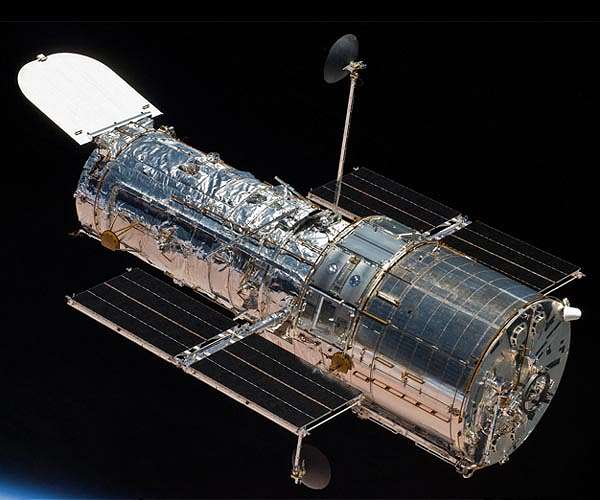The U.S. space agency, NASA, said it signed an agreement with Elon Musk’s SpaceX to study whether the life expectancy of the venerated Hubble Space Telescope can be extended.
NASA said Thursday it has no plans to carry out or fund a service mission for the Hubble Space Telescope. Instead, it will carry out a feasibility study to see if SpaceX can use its Crew Dragon capsules to do the heavy lifting.
A six-month study aims to collect data that will determine whether Hubble can move into a more stable orbit with the help of SpaceX capsules. Hubble is falling out of its original orbit, established at about 370 miles above the Earth’s surface in 1990. Since then, it’s dropped about 15 miles and scientists worry it may eventually fall into the atmosphere and burn up.
“Reboosting Hubble into a higher, more stable orbit could add multiple years of operations to its life,” NASA said.
Diminishing funds for the U.S. space agency prompted outreach to the private sector. Working in coordination with the Polaris Program, a program organized by entrepreneur James Isaacman, NASA hopes the partnership will yield significant and far-reaching results. Isaacman commanded the first all-civilian spaceflight last year.
“As our fleet grows, we want to explore a wide range of opportunities to support the most robust, superlative science missions possible,” said Thomas Zurbuchen, the associate administrator for the science mission directorate at NASA headquarters in Washington, D.C.
A SpaceX Falcon 9 rocket lifts off seconds after 3:22 PM with the first manned Crew Dragon spacecraft from Complex 39A at the Kennedy Space Center, Florida on Saturday, May 30, 2020. The mission, classified as Crew Demo 2, is flying NASA Astronauts Doug Hurley and Bob Behnken and is the first manned mission from the Center in over nine years. .Photo by Joe Marino/UPI
Space X is already using its Dragon capsule to bring astronauts to and from the International Space Station, which has an average orbit some 250 miles above the Earth’s surface.
Hubble was launched in 1990. Its successor, the James Webb telescope, was launched earlier this year and is already returning images from space that are far more detailed than Hubble. But by extending Hubble’s life, scientists hope to gain a more comprehensive understanding of the universe.
“With the James Webb telescope now online, Hubble’s mission has only gained in importance,” Isaacman told the BBC. “It’s absolutely exciting to think about the possibility of extending the life and capabilities of one of our greatest explorers.”
As NASA’s Double Asteroid Redirection Test (DART) intentionally crashed into Dimorphos, the asteroid moonlet in the double-asteroid system of Didymos, on Tuesday, two of the great observatories, the NASA/ESA/CSA James Webb Space Telescope (BLUE) and the NASA/ESA Hubble Space Telescope (RED), captured views of the unique experiment. The DART impact observations mark the first time that NASA used Webb and Hubble to simultaneously observe the same celestial target. Photos courtesy of NASA/ESA/UPI
Related Links
Rocket Science News at Space-Travel.Com
| Tweet |
|
|
|
We need your help. The SpaceDaily news network continues to grow but revenues have never been harder to maintain. With the rise of Ad Blockers, and Facebook – our traditional revenue sources via quality network advertising continues to decline. And unlike so many other news sites, we don’t have a paywall – with those annoying usernames and passwords. Our news coverage takes time and effort to publish 365 days a year. If you find our news sites informative and useful then please consider becoming a regular supporter or for now make a one off contribution. |
||
|
SpaceDaily Monthly Supporter $5+ Billed Monthly |
SpaceDaily Contributor $5 Billed Once credit card or paypal |
|

Satellite Vu signs SpaceX launch contract to deploy thermal monitoring capabilities
London, UK (SPX) Sep 27, 2022
British Earth Observation company, Satellite Vu has signed a second SpaceX launch contract for their second satellite, doubling their thermal data collection capacity, faster than planned, amidst rising climate concerns.
The deal will see Satellite Vu’s unique Mid-wave Infrared (MWIR) imaging satellite launched into Sun-synchronous orbit (SSO) aboard a Falcon 9 rocket in early 2024. The satellite, which will be a clone of the first, will collect near real-time thermal data of the natural and built … read more

